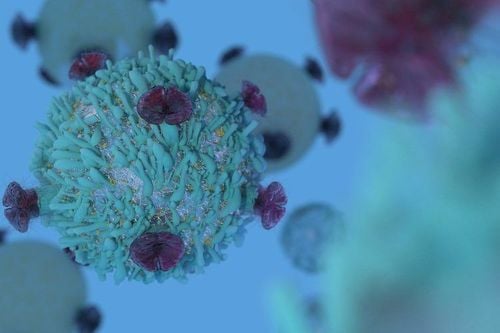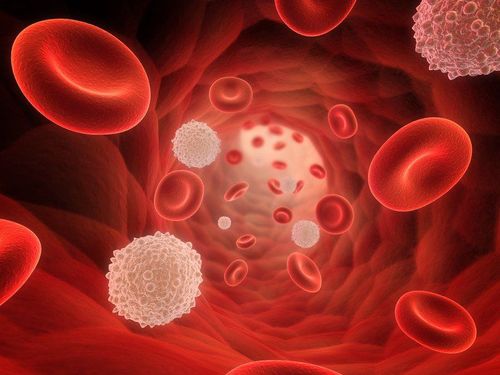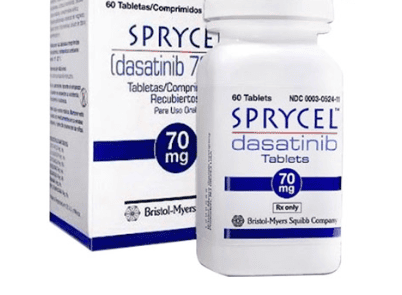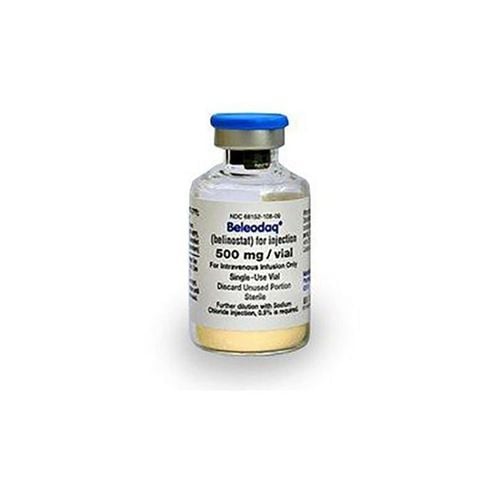This is an automatically translated article.
The article was written by Dr. BS Pham Thi Viet Huong - Doctor of Hematology - Oncology. Currently, Doctor Viet Huong is working at the Hematology and Cell Therapy Unit of the Center for Regenerative Medicine and Cell Therapy - Vinmec Times City International General Hospital.
Lymphoma is cancer that begins in the lymphocytes, a type of white blood cell in the immune system. Lymphoma is the most common type of blood cancer. The disease includes both Hodgkin's lymphoma and non-Hodgkin's lymphoma, depending on the specific type of lymphocyte involved.
1. What is T-cell lymphoma?
T-cell lymphoma is a subtype of non-Hodgkin lymphoma, accounting for one-third of cases (the remaining two-thirds are B-cell lymphomas). Non-Hodgkin lymphoma is a group of diseases of the lymphoid tissue. This is a group of diseases with malignant proliferation of lymphocytes. The disease occurs in all ages, common from 45-55 years old, rare in children. Men are more prone to the disease than women.
2. Causes and risk of T-cell lymphoma?
The cause of T-cell lymphoma has not been clearly established. Risk factors for T-cell lymphoma include:
Infections: HIV, EBV. Infection with these two viruses increases the risk of T-cell lymphoma. Immunity: Natural immunodeficiency, acquired immunodeficiency (HIV/AIDS, EBV infection, organ transplant...). Exposure to toxic chemicals: Workers in areas with radiation, pesticides, dioxins... Patients with autoimmune diseases such as rheumatoid arthritis. People who have unprotected sex, have many partners. Elderly age. Obesity is associated with morbidity. Environmental factors: Pesticides, dioxins, radiation...

Người cao tuổi có nguy cơ mắc bệnh u lympho tế bào T
3. Symptoms of T-cell lymphoma
Swollen lymph nodes: 60%-100% of patients have enlarged lymph nodes, usually in the neck, supraclavicular fossa, axillary, inguinal region, possibly with mediastinal and abdominal lymph nodes (in case of mediastinal and abdominal lymph nodes only). can be detected on radiographs or ultrasound) Extranodal lesions: About 40% of patients have primary extranodal lesions, even only outside of the lymph nodes such as stomach, amydal, orbital, skin. .. Spleen may be enlarged, especially splenic lymphoma or late stage of the disease. Hepatomegaly is less common, often with lymphadenopathy and/or splenomegaly. “B” symptom: Less common than in B-cell lymphoma. In about 25% of patients with fever, night sweats, and weight loss of more than 10% of body weight in 6 months with no known cause. core. In the late stages, the patient develops anemia due to inhibition of bone marrow erythropoiesis, infection due to inhibition of leukocyte production, bleeding due to inhibition of bone marrow platelet production, and manifestations of compression. invasion of lymphoid tissue.
4. T Cell Lymphoma Stages
T-cell lymphoma is divided into 4 stages according to Ann Arbor's staging classification.
Stage 1: Injury to a lymph node region or an extranodal site. Stage 2: Injury to two or more lymph node regions on the same side of the diaphragm. Either localized involvement of a single site or extranodal organ and its regional lymph nodes, with or without involvement of another lymph node on one side of the diaphragm. Stage 3: Lesions are located on both sides of the diaphragm. There may be damage to the spleen, or extranodal sites, or both. Stage 4: Diffuse diffuse damage to many extranodal organs or tissues (eg, bone marrow, liver, lung...), with or without lymph node involvement.

Giai đoạn U lympho tế bào T lan tỏa đến tủy xương
5. Treatment measures for T-cell lymphoma
Treatment of T-cell lymphoma is based on the stage of the disease and histopathology, mainly a combination of chemotherapy - radiotherapy, surgery only applied in some specific cases.
5.1 Surgery In case of diagnostic biopsy.
Can resect extranodal lymphomas (stomach, intestines) with risk of bleeding, intestinal obstruction or hollow visceral perforation
5.2 Radiotherapy Combination therapy with chemotherapy in the radical treatment of T-cell lymphoma
Radiotherapy alone in cases where chemotherapy is contraindicated
Adjuvant radiation therapy after chemotherapy is focused on the original large lymph node areas or the remaining lymph nodes after chemotherapy.
5.3 Chemical Indicated in most cases.
Choose a treatment regimen based on: stage of disease, histopathology, presence or absence of syndrome B, patient's condition.
Side effects of chemotherapy depend on each regimen. The most common are nausea and hair loss. Dangerous complications such as: damage to the heart muscle, damage to the lungs, genital organs or a second cancer (leukemia).
5.4 Marrow transplantation/autologous stem cell transplantation High dose chemotherapy and radiotherapy to suppress bone marrow followed by healthy bone marrow transplantation from the donor or the patient The patient undergoing a bone marrow transplant is at risk of infection rather high Treatment of primary CNS lymphoma: High dose methotrexate with or without cytarabine. Then, whole brain radiation therapy or autologous stem cell transplant. In case of disease progression or contraindication to chemotherapy, whole brain radiation therapy (may be accompanied by corticosteroids) Treatment of non-Hodgkin lymphoma in HIV/AIDS patients, immunocompromised people: Similar multi-drug chemotherapy plus G -CSF
6. Follow-up after treatment
Special cases: Occurrence of enlarged lymph nodes, fever, weight loss... must be examined immediately. For the group with rapid progress, re-examination once a month in the first year. Then, every 3 months in the 2nd year; Every 6 months for the next 3 years and then once a year. For the group with slow progress, re-examination every 3 months in the first year. Then, every 4 months in the 2nd year, every 6 months in the 3rd year, then once a year. Attention should be paid to each periodical examination:
Clinical examination: Pay attention to clinical symptoms, enlarged lymph nodes, enlarged liver, and enlarged spleen. Laboratory tests: Total analysis of blood cells, blood biochemistry; Abdominal thoracic CT or PET, PET/CT every 6 months for the first 2 years. Have a myelogram at least every 2 years. Repeat biopsy when lymph node enlargement returns or new lesions appear. Vinmec International General Hospital is one of the hospitals that not only ensures professional quality with a team of leading doctors, modern equipment and technology, but also stands out for its examination and consulting services. and comprehensive, professional medical treatment; civilized, polite, safe and sterile medical examination and treatment space.
SEE MORE
Successful treatment of T/NK cell lymphoma with immunotherapy for the first time in Vietnam













